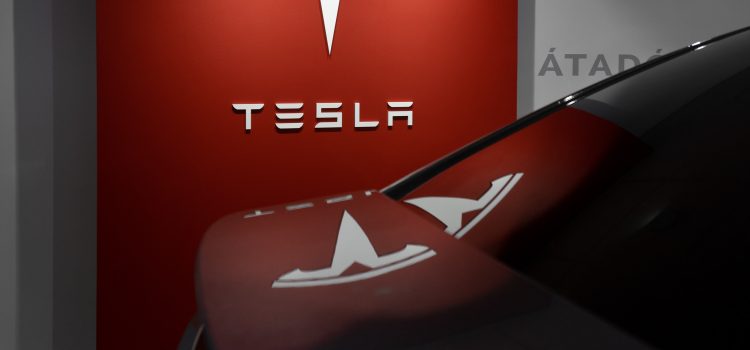
Tesla’s batteries are revolutionizing the automotive industry and changing the way we think about electric vehicles. But what makes them different from other manufacturers? In this blog post, we’ll dive into the revolutionary technology behind Tesla’s batteries to uncover what sets them apart from the competition. We’ll explore their unique design, chemistry, and construction, as well as the advantages of using lithium-ion batteries over traditional lead acid ones. Finally, we’ll look at some of the potential challenges these batteries face in the future and how Tesla is responding to those challenges.
What are Tesla’s batteries made of?
The Tesla battery is made up of a number of cells that are connected together. The cells are made up of a positive and negative electrode, with a separator between them. The separator is made up of a material that allows ions to flow between the electrodes, but not electrons. This is what gives the battery its charge.
The electrodes are made up of different materials depending on the type of cell. For example, the cathode (positive electrode) in a lithium-ion cell is typically made up of lithium cobalt oxide, while the anode (negative electrode) is typically made up of carbon.
Tesla’s batteries also use a number of other materials in order to improve performance and safety. For example, the electrolyte used in the cells is usually a mix of salts, which helps to keep the reaction between the electrodes going smoothly. The cells also contain additives such as manganese or silicon, which help to improve their efficiency.
How do Tesla’s batteries work?
Tesla’s batteries are based on a technology called lithium-ion batteries. Lithium-ion batteries are different from traditional lead-acid batteries in a few key ways:
First, lithium-ion batteries have a higher energy density, meaning they can store more energy in a given volume than lead-acid batteries. This makes them ideal for electric vehicles, which need to store a lot of energy to power the motor.
Second, lithium-ion batteries have a lower self-discharge rate than lead-acid batteries. This means that they will lose less of their charge over time when not in use. This is important for electric vehicles, which may be parked for long periods of time between uses.
Third, lithium-ion batteries can be charged and discharged more times than lead-acid batteries before needing to be replaced. This makes them more durable and longer lasting.
Fourth, lithium-ion batteries do not require regular maintenance like lead-acid batteries do. Lead-acid batteries need to be regularly checked and topped off with water to prevent damage from sulfation. Lithium-ion batteries do not suffer from this problem.
All of these factors make lithium-ion batteries the ideal choice for electric vehicles like the Tesla Model S.
What are the benefits of Tesla’s batteries?
Electric vehicles have a number of advantages over traditional gasoline cars. They’re cheaper to operate and maintain, they emit no pollutants, and they have the potential to be much more efficient. But one of the biggest obstacles to widespread adoption of electric vehicles has been the cost and range of batteries.
Tesla’s batteries are different in a few key ways that make them more expensive, but also much better suited for electric vehicles. First, Tesla’s batteries are made with lithium-ion cells. This is the same type of battery used in most laptops and cell phones, and it’s a huge improvement over the lead-acid batteries that were used in early electric cars. Lead-acid batteries are heavier, take longer to charge, and don’t last as long as lithium-ion batteries.
Second, Tesla uses what’s called cylindrical cells in its batteries. Most other electric carmakers use prismatic cells, which are essentially rectangular blocks. Cylindrical cells are more compact and have a higher energy density, meaning they can store more energy in a given space. This makes them ideal for electric vehicles, which need to pack a lot of energy into a small space.
Third, Tesla’s batteries are designed for high discharge rates. Electric cars need to be able to draw large amounts of power from the battery very quickly when accelerating from a stop or passing another car on the highway. Prismatic cells can’t handle these high discharge rates as well as cylindrical cells, so
Are there any drawbacks to Tesla’s batteries?
The main drawback of Tesla’s batteries is their cost. The company’s battery packs are some of the most expensive on the market, and this high cost can make it difficult for consumers to justify the purchase of a Tesla vehicle. Additionally, Tesla’s batteries are not yet as energy-dense as some of the competition, meaning that they cannot store as much energy as other battery types. This may limit the range of Tesla vehicles and make them less suitable for long-distance travel. Finally, Tesla’s batteries are still relatively new technology, and they have not yet been proven in the long term. It is possible that future iterations of these batteries will be more reliable and longer-lasting, but for now, there is some risk associated with using them.
Conclusion
Tesla’s batteries are an incredible feat of engineering, and it is no wonder that they have revolutionized the way we think about energy storage. The combination of their high energy density and long-lasting charge makes them perfect for powering electric vehicles as well as stationary home appliances. As Tesla continues to innovate with their battery technology, we can expect even more groundbreaking advances in the future that will make our lives easier and greener.











You are so interesting! I don’t suppose I’ve read through a single thing like that before. So great to discover somebody with some genuine thoughts on this issue. Really.. many thanks for starting this up. This site is one thing that’s needed on the internet, someone with a little originality!
It’s nearly impossible to find knowledgeable people for this subject, but you seem like you know what you’re talking about! Thanks
You should be a part of a contest for one of the best websites on the web. I will recommend this web site!